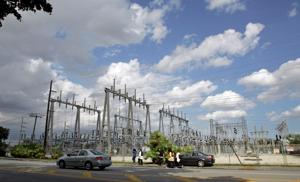Powerful group opposes FP&L’s bid for largest rate hike in Florida history

(The Center Square) – Florida Power & Light Company (FP&L) in March submitted a proposed rate hike that would cost its 5.6 million account holders up to $6.5 billion in increased electric bills over the next four years.
If approved in August by the state’s utility regulator, the Public Service Commission (PSC), the rate hikes – the largest in Florida history – go into effect in January.
Opposing FPL’s proposed rate hike are the AARP, Earthjustice, Environmental Confederation of Southwest Florida, the Southern Alliance for Clean Energy, Florida Consumer Action Network, Vote Solar, the Florida Industrial Power Users Group and the Florida Retail Federation.
But now a new advocacy group stocked with heavy hitters has emerged to challenge FP&L before the PSC.
Orlando-based Floridians Against Increased Rates (FAIR) was registered with the IRS as a 501c4 in March and claims on its Facebook page to have more than 500 members.
FAIR’s members include former PSC Commissioner Tom Herndon, who served as adviser to former Govs. Lawton Chiles and Bob Graham; former PSC Executive Director Tim Devlin; former chief lobbyist and Jacksonville Electric Authority board member Michael Hightower; Nancy Watkins, a Tampa-based certified public accountant and Republican candidate adviser; and Scheff Wright, an attorney who has represented the FRF before the PSC in challenge rate hikes.
The groups webpage says it will challenge FP&L’s proposed rate hike on the grounds that its profits exceed, by $1 billion in “over-charging,” what is allowed under Florida public utility law.
“FP&L and its parent company, NextEra, are already highly profitable, and if this rate hike goes through, FPL’s Return on Equity (ROE) would be 20% higher than the national average approved in 2020 by other public service commissions in the United States,” FAIR maintains.
FP&L wants regulators to allow it to earn an 11.5% annual return on investment (ROI), which FAIR contends significantly exceeds the 9.55% ROI average for utilities. FAIR contends the PSC should force FP&L to lower rates.
“Our state suffered massive unemployment and business closures last year, but FPL and its parent company, NextEra Energy, thrived,” FAIR states. “NextEra recently posted large adjusted profits for 2020 and announced increased stock dividends for its shareholders. They do not need to drain more money from our struggling residents and businesses.”
NextEra-owned FP&L is the largest energy company in the United States by retail electricity produced and sold. The company serves more than 5.6 million customer accounts supporting more than 11 million residents, nearly half Florida’s population.
FP&L’s four years of rate hikes would begin with a $1.1 billion increase on Jan. 1, 2022, and be succeeded by a $607 million hike in January 2023 and increases to pay for solar expansion in 2024 and 2025, estimated to be about $140 million each.
FP&L maintains the cumulative four-year increase, projected to generate between $6.2 billion and $6.5 billion, is “necessary to maintain the strong value proposition that customers expect today as well as in the future.”
The company maintains the rate increases are necessary to accommodate anticipated growth of nearly 500,000 new accounts through 2025.
FP&L President/CEO Eric Silagy told the PSC in comments accompanying the March proposal that “significant investment” is needed “to meet compliance obligations and maintain or improve day-to-day reliability for customers.”
Silagy said FP&L has “taken extraordinary steps to help mitigate the economic effects of the pandemic on particular groups of customers including the implementation of specific relief programs for low income and small business customers.”
Even with the rate hike, Silagy said on average, FPL’s customers would be paying for electricity “significantly below the national average.”
The last time FP&L was denied a rate increase by the PSC was in 2010, when it sought a $1 billion increase in the wake of the 2007-09 Great Recession.
Disclaimer: This content is distributed by The Center Square
